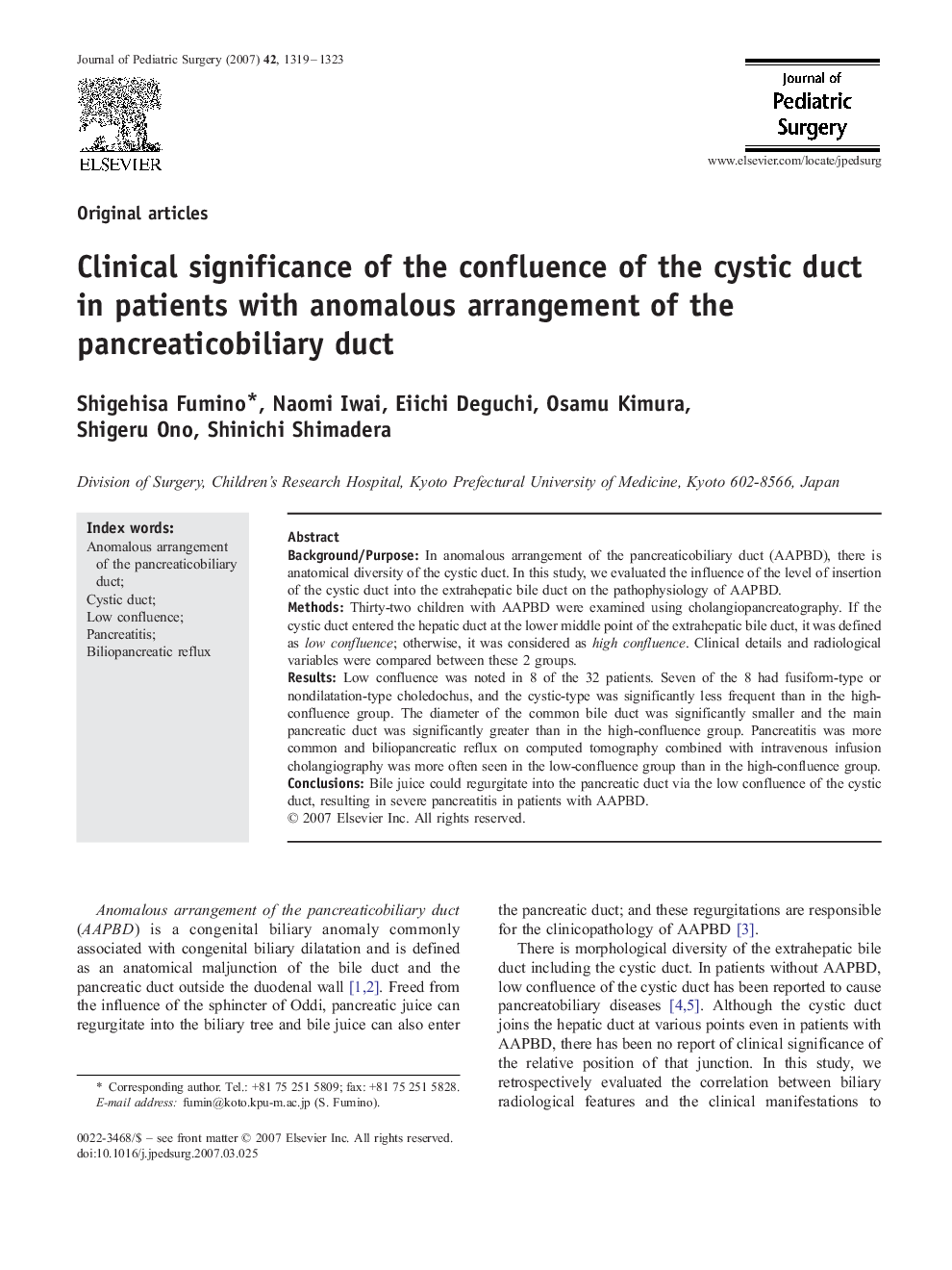| Article ID | Journal | Published Year | Pages | File Type |
|---|---|---|---|---|
| 4160345 | Journal of Pediatric Surgery | 2007 | 5 Pages |
Background/PurposeIn anomalous arrangement of the pancreaticobiliary duct (AAPBD), there is anatomical diversity of the cystic duct. In this study, we evaluated the influence of the level of insertion of the cystic duct into the extrahepatic bile duct on the pathophysiology of AAPBD.MethodsThirty-two children with AAPBD were examined using cholangiopancreatography. If the cystic duct entered the hepatic duct at the lower middle point of the extrahepatic bile duct, it was defined as low confluence; otherwise, it was considered as high confluence. Clinical details and radiological variables were compared between these 2 groups.ResultsLow confluence was noted in 8 of the 32 patients. Seven of the 8 had fusiform-type or nondilatation-type choledochus, and the cystic-type was significantly less frequent than in the high-confluence group. The diameter of the common bile duct was significantly smaller and the main pancreatic duct was significantly greater than in the high-confluence group. Pancreatitis was more common and biliopancreatic reflux on computed tomography combined with intravenous infusion cholangiography was more often seen in the low-confluence group than in the high-confluence group.ConclusionsBile juice could regurgitate into the pancreatic duct via the low confluence of the cystic duct, resulting in severe pancreatitis in patients with AAPBD.
